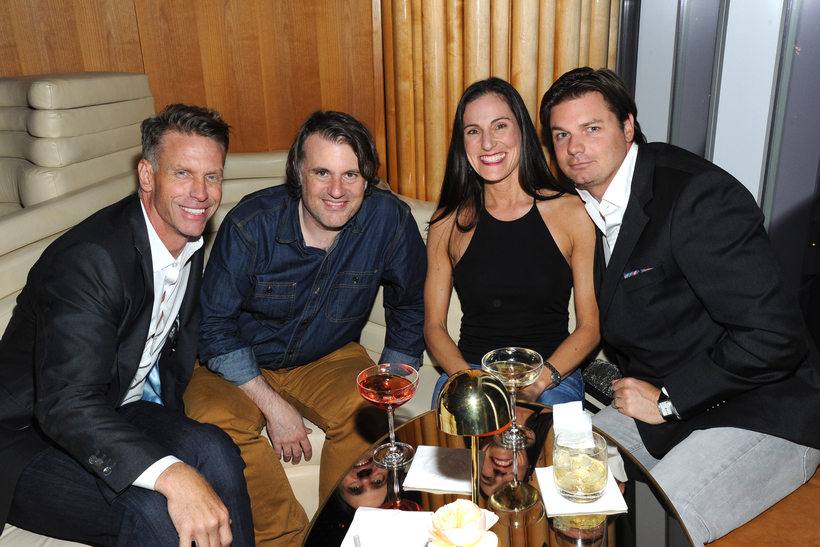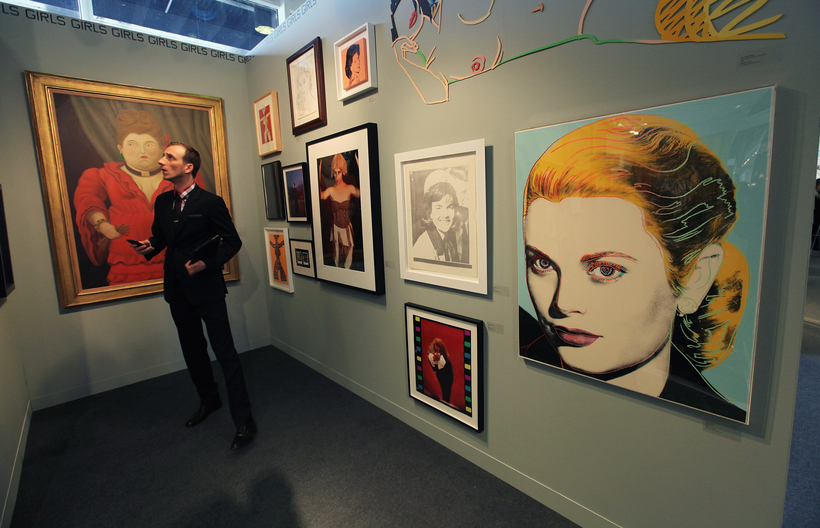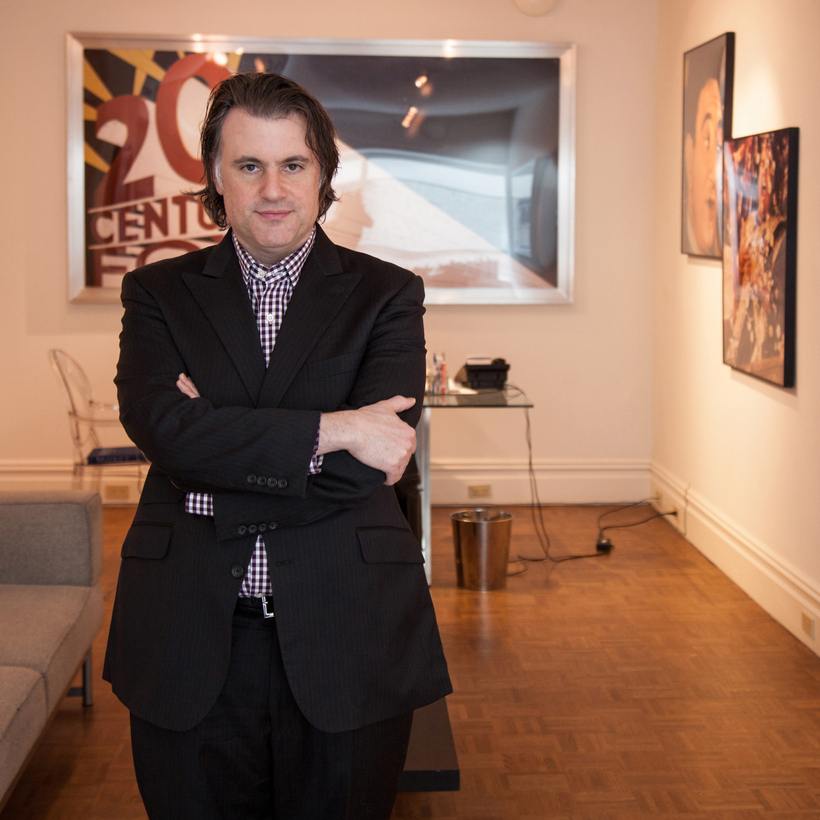Art-World Confidential
He was one of New York’s most active art dealers—until he got busted for wire fraud. Now Ezra Chowaiki reveals the underhanded tricks of the trade, and how to survive in a prison filled with V.I.P.’s
Published on AIR MAIL, March 18, 2023
New York, November 6, 2007— Auction Night
The doorman at Christie’s is named Gil. He is a mustachioed force of energy, charm, and manners, and he spins the glass door with such vigor that you don’t even have to take your hands out of your winter-coat pockets as you glide in. By the time you’ve entered the heated lobby, Gil has winked at you, patted your shoulder, wished you good luck, and filled you with enough confidence to spend millions of dollars on something priceless. Walking into Christie’s “Impressionist and Modern Art Evening Sale” is always a heady experience.
A sea of fur, Hermès, and perfume greets you at the doorway to the salesroom. Most of those gathered here are the world’s leading art dealers; some are billionaire collectors. Sure, you may spot a superstar or two, such as Leonardo DiCaprio or Marc Jacobs, but you’re more interested in people like Microsoft co-founder Paul Allen, banker Donald Marron, or industrialist Mitchell Rales. The names of the billionaires here may not mean much to most people, but they are the richest of the rich. These are the true superstars—old white guys in gray suits.
A particularly stunning woman holding a clipboard guides you up the staircase, and the din of the throng dissipates. She walks you to a door, unlocks it with a card, gives the card to you, and leads you in. There are posh seats, a table with a full set of glasses and champagne, scotch, vodka, gin, and wine, along with carefully adorned trays of canapés

You are in a skybox on the mezzanine level and through the window you can see the salesroom filling below. The crowd filters through the large doorway and bifurcates as people find their seats in the cramped, oak-lined salon. The seating has been carefully and strategically arranged to place buyers next to their friends, or their competitors.
You can predict where each dealer or billionaire collector will sit, and you are gratified when you guess that Bill Acquavella and his family will be on the far right, three rows back. You correctly predict that Andrew Fabricant will sit just across the aisle behind Larry Gagosian, who will probably be accompanied by entertainment mogul David Geffen. You’ve been to so many of these things that you notice the anomalies, so tonight you’re very interested to see that Geneva dealer Jan Krugier has not shown up for his customary seat in the front row. Is he really as sick as they say? What will happen to his many Picassos when he dies?
Tonight, Christie’s has deemed you important enough to give you a skybox and, sitting above the throngs of well-coiffed heads, it’s hard not to feel superior. While you wait for your colleagues and guests to arrive, you marvel at how quickly you got here.
It’s less than 10 years since you entered this impenetrable world, and now you’re at the top. You expect this heightened state of luxury and intrigue to be your new normal forever.
How wrong you were.
For 20 years, I was one of the top art dealers in the world, selling masterpieces by Picasso, Monet, Warhol, Rothko, and every other major artist you can think of. If you were a billionaire collector, you could come to me to find whatever you wanted. I built a great and respected private gallery on Park Avenue. I felt lucky to be so privileged and so special.
But this business is not gentle. It’s ruthless and riddled with fraud. I should know.
A few years ago, the royal House of Alba consigned a Renoir to my gallery to sell. A friend—a good friend—had told me she had a buyer for it. Negotiations became protracted, and I had to extend my contract with the House of Alba by putting down a deposit of $500,000. In the end my friend’s buyer backed out—I later found out they were never even interested—I lost my deposit, and my friend never repaid me. Getting screwed is an occupational hazard of the business. But after 17 years of resisting any shenanigans—and having lost millions for all my good conduct—I finally succumbed to temptation.

Producers-style, I sold partial shares in paintings that added up to more than 100 percent. I collateralized art that we had on consignment. I sold the same painting many times over. I lied about payments and sent false wire proofs. It was terrible and stupid, but I did whatever I needed to do to help my gallery stay afloat. I didn’t intend to screw anyone; I simply tried to buy time and pay everyone back eventually, as I had done many times before. But my long-term business partner got spooked and turned me in, and I was convicted of wire fraud and sentenced to 18 months in a federal prison.
The crazy thing about the art business is that what I did is common practice. I know because I’ve seen every variation of corruption you can imagine. I’ve been offered fakes almost every week. I’ve been offered paintings looted by the Nazis. I’ve been offered paintings that have been faked to look like they’ve been looted by the Nazis. I’ve seen kickbacks given to art advisers, museum directors, and auction-house specialists. I’ve witnessed the most esteemed, authoritative scholars authenticate works which were not only fake but which they knew were fake, in exchange for sizable sums of money. I’ve seen dealers do anything to make a sale, from adding details to a painting to planting stories in the media, to getting someone laid.
But the business is so secretive, and so opaque, that even though lies and fraud are rampant, no one gets in trouble.
Except, it turns out, a schmuck like me.
Otisville Prison Camp, August 14, 2019
You never really get used to falling asleep in prison. But I liked it better when I had no dreams at night. In prison my dreams are detailed and realistic. I am at the gallery, or talking to a client, or moving about the Upper East Side. It’s all so familiar; I can even remember dreaming smells—the perfumes, the city. So, waking up is often a shock. I pop my eyelids open and stare at the drop ceiling about three feet above my head.
From my vantage point I can see all the other top bunks and their respective occupants. There are 50 of us in this room. “Am I really here?,” I ask myself constantly, hoping beyond reason that this is the dream.
But it’s not.
The harsh reality hits me the same way every morning. I really am in prison. I really am a felon. And with that, the immediate yet gradual understanding sweeps back into my brain: I fucked up. Bad.
And still, I feel lucky. I ended up at Otisville prison camp, in upstate New York, a minimum-security satellite federal facility that mainly houses white-collar criminals. There are no fences, no gates, no guns. Many of the freedoms most prisons strip from inmates remain intact here. Shame is my real punishment.
I remained pretty guarded for a while, but gradually I began to notice that everyone here was just getting by. I would see formerly powerful men, like State Senator Dean Skelos (in for federal corruption) wait in line for food, or ask if someone had extra toilet paper—we each have our own rolls, two every month.
One of my closest friends in prison came from one of the great art families of New York (in for trying to defraud the Environmental Protection Agency). He would scavenge for edible fruit that had been discarded outside for the deer to eat. Respected doctors, now struck off the medical register for disability fraud, would scrounge the bottom of a discarded bag of peanuts. And all of us would compete for phone time just to have some minutes to connect with our loved ones. Nobody, even if he seems to have power within the camp, is immune from the most negative aspects of incarceration: loneliness, regret, heartache, isolation, indignity.
As I continued my stay, I began to see all these men as, well, men. I vividly remember the realization I came upon as I scanned the dining area one evening: there are no criminal masterminds here (well, maybe one or two). Most were regular guys who had achieved moderate success—enough to be noticed but not enough to be “too big to fail.”
Nobody is immune from the most negative aspects of incarceration: loneliness, regret, heartache, isolation, indignity.
Most of the inmates here have normal, respectable professions—doctors, lawyers, accountants, insurance brokers, entrepreneurs, clergymen. Yes, people like me.
And people like you.
Are the Sacklers here? No, but the doctors who prescribed the Purdue Pharmaceuticals opiates are. Is the head coach of Arizona State here for the pay-to-recruit scam? No, but his assistant is. Are the major hedge-fund managers here? No, but their deputies are. Are the most dangerous art professionals here? What do you think?
My bunkmate, whom I will call “Bob,” is just shy of being a billionaire. He is the wealthiest and most successful guy in here. In many ways, we both inhabited the same world and therefore know many of the same people. He is also an avid art collector, with one of the world’s finest collections of Dutch old masters. When I first got here, I told him I could have sworn I had seen him a couple of years earlier at the Maastricht art fair. He confirmed he was there.
Bob and I have spent countless hours talking about art, literature, science, world history, and politics and gossiping about people we both know in the art world or on the Upper East Side. I have had the pleasure of enlightening him on the underhanded machinations of the art business, of which he was totally unaware. He actually thought all those dealers who sold him all those expensive works of art were his friends.
I asked Bob once: “Oh, so your daughter was in a meeting at an art-appraisal firm in London to sell two of your paintings, and the dealer who originally sold you those paintings just happened to show up?”
“Yes, isn’t that a great coincidence?,” Bob replied. “Can you imagine … Wait, are you suggesting it was planned?”
A very sad thing for me is to see Bob trying to recapture some of his past grandeur and glory. Nobody here cares how much you accomplished in life. Quite the opposite, because everyone has equal standing in here. We all have to stand up for the correctional officers to count us at least twice a day (three times on weekend days, and countless times if there is any sort of irregularity). This pointless exercise—as if we would try to escape!—is demeaning and designed to keep us in our place. As they walk by, I try to not look at them, in order to signal that I have more important things to occupy my mind. But Bob sometimes hums “Fair Harvard,” like an incantation that will maintain his position as an important member of society. It’s almost tragic.
Our high-profile residents are a wonderful distraction. First came the Situation from Jersey Shore, who was sentenced to an eight-month bid for tax evasion. From the beginning, “Sitch” and I hit it off and played Scrabble at least three times a day with George, the Jennifer Lawrence–iCloud hacker. Initially, Sitch would cheat by peeking into the bag and choosing good letters, but after we caught him and tightened the reins, Sitch actually got very good. It’s amazing what several idle hours of studying the Scrabble dictionary can do.
When Billy McFarland, the co-founder of the infamous Fyre Festival, arrived he was so thin after months at the Metropolitan Detention Center in Brooklyn—a harsh place—I hardly recognized him, even though I had met him outside a few times before either of us had gotten in trouble. He was initially relieved to be here, but his reckless streak did not allow him to last long at Otisville.
Billy bragged about having a cell phone—a big no-no. These rumors, as they often do, made their way to the administration, who seized Billy and put him in the Special Housing Unit—a fancy jail term for solitary confinement. But it did not end there. They could never find Billy’s phone, so for several months they searched for it rabidly, turning the place upside down. One time they conducted a surprise search at the sewage plant, where I worked—as did Billy—and made us strip. I had to strip with just a young, aggressive guard in the room with me. He even made me squat and cough, as if Billy’s phone was up my ass. This was the lowest point for me.
It took me days to get over that, and eventually all of us began to resent Billy for putting us through it. Finally, Billy was sent away to a low-security facility in Elkton, Ohio. Frankly, I’m glad he went. He was losing his mind in here, and was probably happier in a place with much more chaos.
The day Michael Cohen arrived a giant fuss was made. Press helicopters flew overhead and an announcement was made that we were to be on lockdown while the former personal lawyer to Donald Trump was driven in. The Situation was visibly jealous of the attention that was being diverted from him to Cohen, who was a much bigger deal. For the next few months, both of them competed for recognition, but they were always friendly with me.
He made me squat and cough, as if Billy’s phone was up my ass.
Cohen worked with me at the sewage plant, too. I found him generous and very funny, if somewhat self-absorbed. I’m a crossword-puzzle fanatic, and every few weeks when he got a backlog of the Financial Times, he let me cut out the cryptic crosswords from them. He knew how much this meant to me, and he often teased me that he would withhold them or tear them up. Little things mean a lot in prison.
New York, March 8, 2023
I was released from prison just over three years ago, on January 16, 2020. Tomorrow, my probation ends. From the beginning, I accepted my punishment, but in the interest of making the universe a little fairer, I decided to write about my experience in the art business with the hope of enlightening any unsuspecting souls that may want to enter this gorgeous cesspool.
And this may surprise you, but I’m still selling paintings. From the minute I was released, I kept getting phone calls from people wanting to buy paintings from me, or wanting me to sell their paintings, or even partner with me. I couldn’t help it: I’m good at dealing art, just terrible at managing money. So I agreed to jump in, only this time I’ll do it in a different way: no galleries, less trust, and no partners. I’ll also be exceedingly careful to steer clear of all the enticing pitfalls out there.
I might have changed, but the art world hasn’t.

